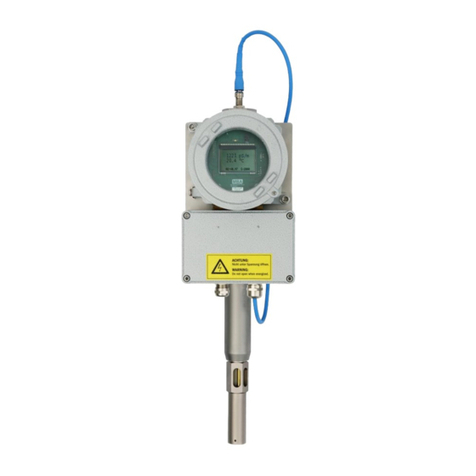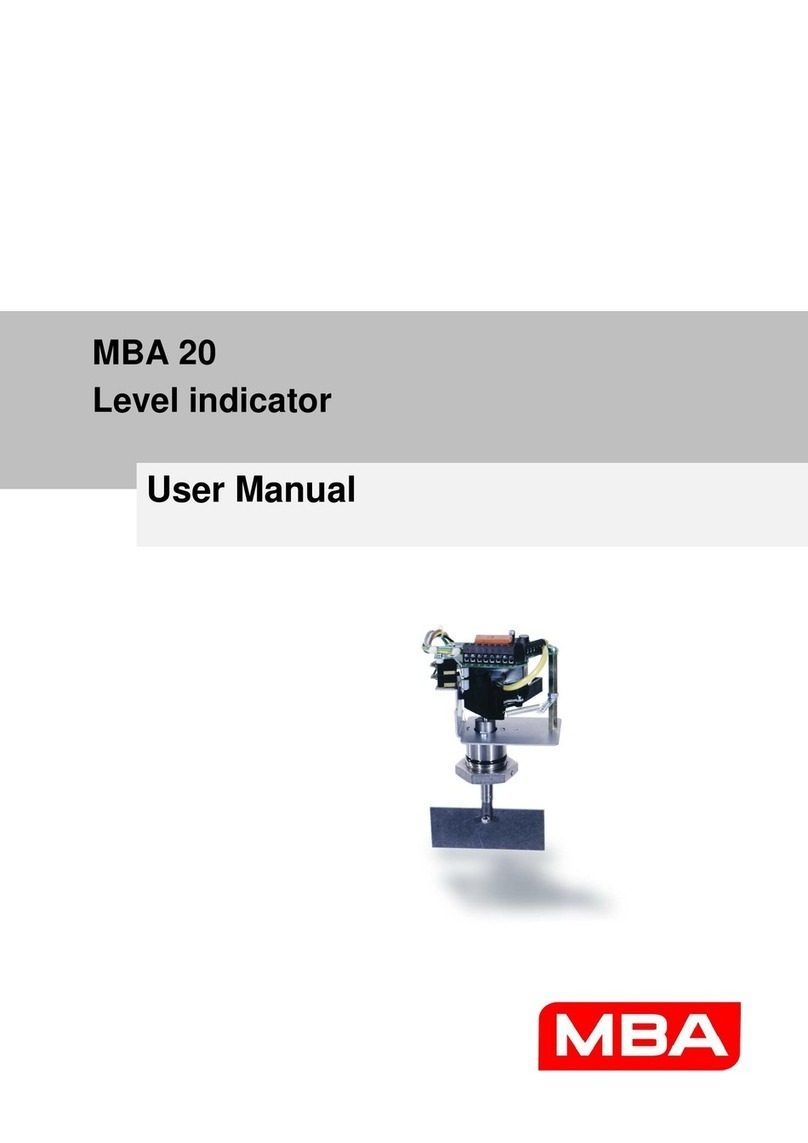
Content
1Safety Instructions .........................................................................................................................................................................................5
1.1 Important instructions for safe usage .......................................................................................................................................5
1.2 Principal installation instructions ..............................................................................................................................................5
1.3 Principal operating instructions ................................................................................................................................................5
1.4 Responsibilities of the user .......................................................................................................................................................6
1.4.1 Only allow installation and use by specialist technicians ..........................................................................................................6
1.4.2 Correct use ................................................................................................................................................................................6
1.4.3 Consideration of local conditions..............................................................................................................................................6
1.4.4 Safekeeping of the documentation ...........................................................................................................................................6
2Product Description .......................................................................................................................................................................................7
2.1 Intended usage..........................................................................................................................................................................7
2.1.1 Intended scope of application...................................................................................................................................................7
2.1.2 Application restrictions .............................................................................................................................................................7
2.1.3 Certification for explosion-endangered areas...........................................................................................................................7
2.2 Operating principle....................................................................................................................................................................8
2.3 Product components.................................................................................................................................................................9
2.3.1 MLA1000-S measuring probe ....................................................................................................................................................9
2.3.2 MLA1000-A display unit ............................................................................................................................................................9
2.3.3 MLA1000-K probe cable ............................................................................................................................................................9
2.3.4 Options......................................................................................................................................................................................9
2.4 Scope of delivery .....................................................................................................................................................................10
3Installation of the Measuring Probe ...........................................................................................................................................................11
3.1 Selecting the installation location for the measuring probe ...................................................................................................11
3.1.1 Requirements for the measuring liquid at the installation location........................................................................................11
3.1.2 Requirements for the installation location..............................................................................................................................11
3.2 Preparing the piping system....................................................................................................................................................12
3.3 Installation of the measuring probe with immersion pipe ......................................................................................................12
4Installation of the Display Unit....................................................................................................................................................................14
4.1 Mounting the display unit .......................................................................................................................................................14
4.1.1 Criteria for the mounting location...........................................................................................................................................14
4.1.2 Securing the display unit without a mounting bracket ...........................................................................................................14
4.1.3 Securing the display unit with a mounting bracket.................................................................................................................14
4.2 Connecting the potential equalisation ....................................................................................................................................15
4.3 Opening the housing ...............................................................................................................................................................15
4.4 Installing the cables.................................................................................................................................................................16
4.4.1 General information about installing the cables .....................................................................................................................16
4.4.2 Connecting the probe cable ....................................................................................................................................................16
4.4.3 Connecting the measurement reading outputs ......................................................................................................................16
4.4.4 Connecting the supply voltage ................................................................................................................................................17
4.4.5 Closing the cable glands and housing......................................................................................................................................17
5Operation.......................................................................................................................................................................................................18
5.1 Putting the MLA1000 into operation ......................................................................................................................................18
5.2 Checking the operating status.................................................................................................................................................18
5.2.1 Indications for a safe operating status ....................................................................................................................................18
5.2.2 Indications for an unsafe operating status..............................................................................................................................18
5.3 Display screens........................................................................................................................................................................18
5.3.1 Screen after switching on........................................................................................................................................................18
5.3.2 Operating screen.....................................................................................................................................................................18
5.3.3 Malfunction screens................................................................................................................................................................19
6Maintenance..................................................................................................................................................................................................21
6.1 Removing the immersion pipe (with measuring probe)..........................................................................................................21
6.2 Testing the measuring function...............................................................................................................................................21
6.3 Cleaning the measuring probe ................................................................................................................................................22
6.4 Reinstalling the measuring probe............................................................................................................................................22
7Troubleshooting ...........................................................................................................................................................................................23
7.1 If the MLA1000 does not function at all ... ..............................................................................................................................23
7.2 If the measurement readings are obviously incorrect... .........................................................................................................23
8Appendix .......................................................................................................................................................................................................24
8.1 Technical data .........................................................................................................................................................................24
8.1.1 MLA1000-S measuring probe ..................................................................................................................................................24
8.1.2 MLA1000-A display unit ..........................................................................................................................................................24
8.1.3 MLA1000-K probe cable ..........................................................................................................................................................24
8.2 Certification/suitability test.....................................................................................................................................................24
8.3 Disposal Information ...............................................................................................................................................................25































